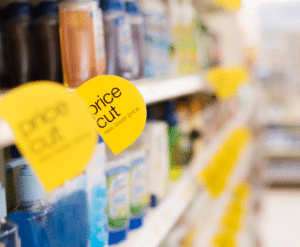3 strategies of the most successful retailers in the USA
It goes without questioning that the retail landscape is changing drastically. In the last five years we have seen heritage chains peril under the pressure of competitors like Amazon and Target. It raises a question – how can retailers win against capital-rich competitors like Amazon? In this blog post we will explore three unique strategies used by some of the most successful and creative retailers.
Alternative Inventory Strategies
Inventory is one of the largest assets on the retail balance sheet and getting the inventory product mix correct season after season, year after year is difficult to maintain and forecast. Alternative inventory strategies that do not rely on purchasing goods is a way to increase upside sales opportunities. Farfetch and Best Buy are two retailers who have crafted genius strategies. Farfetch serves as the online platform for small luxury boutiques. In exchange for a cut of the sale, local boutiques have access to luxury clientele from all over the world. Best Buy is another great example of alternative strategy execution. Best Buy recognized that customers were using their stores as showrooms to manipulate products and then purchasing online from Amazon. Instead of fighting the trend, Best Buy leased floor space to brands as mini showrooms, decreased their inventory levels, and enacted a price match policy. While retailers like Circuit City were filing for bankruptcy, Best Buy has increased their stock price over 500% in the last 7 years (December 2012 – December 2019).
A fair and attractive price range
It’s no secret that the consumer is pushing for lower priced goods. Eroding profit margins and a booming off-price business signal the consumer’s taste for markdowns, promotions, and off-priced goods. There is something very simple and powerful about a fair price point that speaks to all consumers without a markdown or promotion. Target, TJX, and Costco are three examples of retailers who understand this concept. Espacially Target is interesting because their apparel merchandise speaks to the more fashion forward customer without a heavy price tag – something Walmart has never been able to achieve. With younger generations focusing their disposable income on experiences, and rising debt to income ratios due to growing student debt- there is little room for apparel retailers to grab the consumers attention with expensive product. A product mix that includes democratic price points is sure to win market shares in these conditions.
An offer that meets the demand for products with a « practical » dimension
Department stores and malls were incredible until online shopping became seamless and easy with free shipping. Department stores and malls failed to recognize that the priorities of consumers are changing. As the old saying goes “Time is money.” Our society is instant – we want information now, we want takeout delivered now, we want cars to show up at our doorstep in minutes to take us to our specific destination… now. All controlled from the palm of the hand.
What is so compelling about going to a mall, finding parking, fighting the crowds, looking for the item you want, waiting for a dressing room, waiting in line to check out, fighting the crowds, finding your car, and sitting in traffic? Nothing. With one click purchase, free shipping, 2-day delivery, and free returns, wouldn’t you rather spend your afternoon doing something better than sitting in mall traffic? Absolutely. Retailers who are winning understand that convenience is the new luxury. Between Uber, Seamless, Amazon, and luxury retailers like Net-a-Porter, our tolerance for the old retail model is declining quickly.
Nordstrom’s buy online pick up in store and the Nordstorm Local concept are seamless and convenient operations that still bring the consumer into the store location without the hassle. Amazon has shown a particularly deep understanding of this concept with the rollout of their 1-day shipping for Prime Members and also in their new brick and mortar presence. All Amazon brick and mortar stores are small, easy to navigate, and the checkout process is either completely gone (Amazon Go) or expedited with mobile check out (Amazon 4-Star, Amazon Books). Net-a-Porter is a great example of a luxury retailer who understands that their customers have better things to do than sit in a dressing room. Luxury goods can be white glove delivered anywhere in New York City or the Hamptons within hours… now that’s luxury.
Go further with Mercio:
To analyse and optimise your stocks, an on-the-fly, real-time data mining and visualisation tool will link your product repositories to your stock and receipt information, with real-time changes in your financial results.
Mercio’s retail price optimization platform will enable your teams to implement and industrialise differentiated pricing strategies to accurately drive traffic, margin and price image across tens or hundreds of thousands of SKUs.





